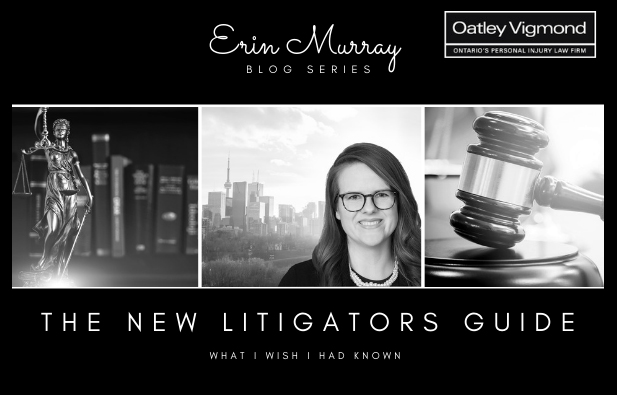The New Litigators Guide: Your First Mediation Brief

Another common task for young associates is to draft a mediation brief. There is no one correct way, and every lawyer you work for will probably have his or her own style that you should be aware of. Here are some things to keep in mind that most lawyers would agree on.
- Be Brief
Even lawyers and mediators have short attention spans. Be ruthless in editing out facts and details that your argument doesn’t turn on. If liability has been admitted, do not spend a full paragraph on fault.
The definition of brief is in the eye of the beholder. As a Plaintiff lawyer, I try to keep it under 15 pages. As a Defence lawyer, my briefs were usually less than 7.
- Be Factually Correct
Don’t trust summaries, especially for facts you think are favourable to your case. It is rare if I don’t correct a counsel at discovery when they are working from a summary. Go to the source document and confirm the fact. It impacts your own credibility if you write something that is proven to be untrue. It is also embarrassing for your principal if they are corrected at the mediation.
Some lawyers will append every document they reference to their briefs. I don’t. I assume the other lawyer has read documents I’m referring to. I do quote documents and embed cropped images of extremely helpful documents, where my opponent may be questioning whether the note actually said X. The only documents I append are my expert reports.
When you are highlighting those not-so-helpful facts, stating the correct facts is enough. You do not need to editorialize. Editorializing will make your opponent wonder if you are over-stating your case. An easy way to avoid editorializing is to remove adjectives and adverbs. For instance, you don’t need to lead with “clearly” is something is clear. The evidence will speak for itself.
- Use Headings
This gives your brief structure without requiring transitional phrases. Bolding key items, like quantums or diagnoses, doesn’t hurt either. The sections I’m currently using most often (as a Plaintiff’s counsel) are this:
OVERVIEW
LIABILITY
PRE-MORBID HISTORY
INJURIES AND TREATMENT
IMPAIRMENTS AND PROGNOSIS
INCOME LOSS
FUTURE CARE COSTS
COLLATERAL BENEFITS
EXPOSURE
Back when I was a Defence lawyer, my headings were typically:
BACKGROUND
LIABILITY
INJURIES
INCOME LOSS
FUTURE COSTS
HOUSEKEEPING
- Admit That Which Ought to Be Admitted
It’s a mediation, and you are going there to compromise. It does not hurt your case to admit the patently obvious and it helps establish your credibility. Also, if you are willing to admit the strengths of your opponent’s case, they will be more likely to listen when you highlight the weaknesses.
As a Plaintiff lawyer, this means you are going to include “the bad” in your brief. The negative performance review, the complicated pre morbid history, the messy separation. Of course, you will provide context and explain why these issues are not going to destroy your case.
As a Defence lawyer, this means you are going to admit the unassailable. The high income tax returns, the clean OHIP summary, the airbags deploying. And you will provide context by also including the not-so-helpful facts for the Plaintiff.
- Go to the Mediation
If you wrote the brief, ask to go to the mediation to observe. You may not be able to bill your client for it, but it’s the only way to get some experience with negotiating before you find yourself at the table.
This piece is part of an ongoing series of blogs by Erin Murray, The New Litigators Guide.
To access all of the blogs as they are posted, please click here and bookmark this link.
